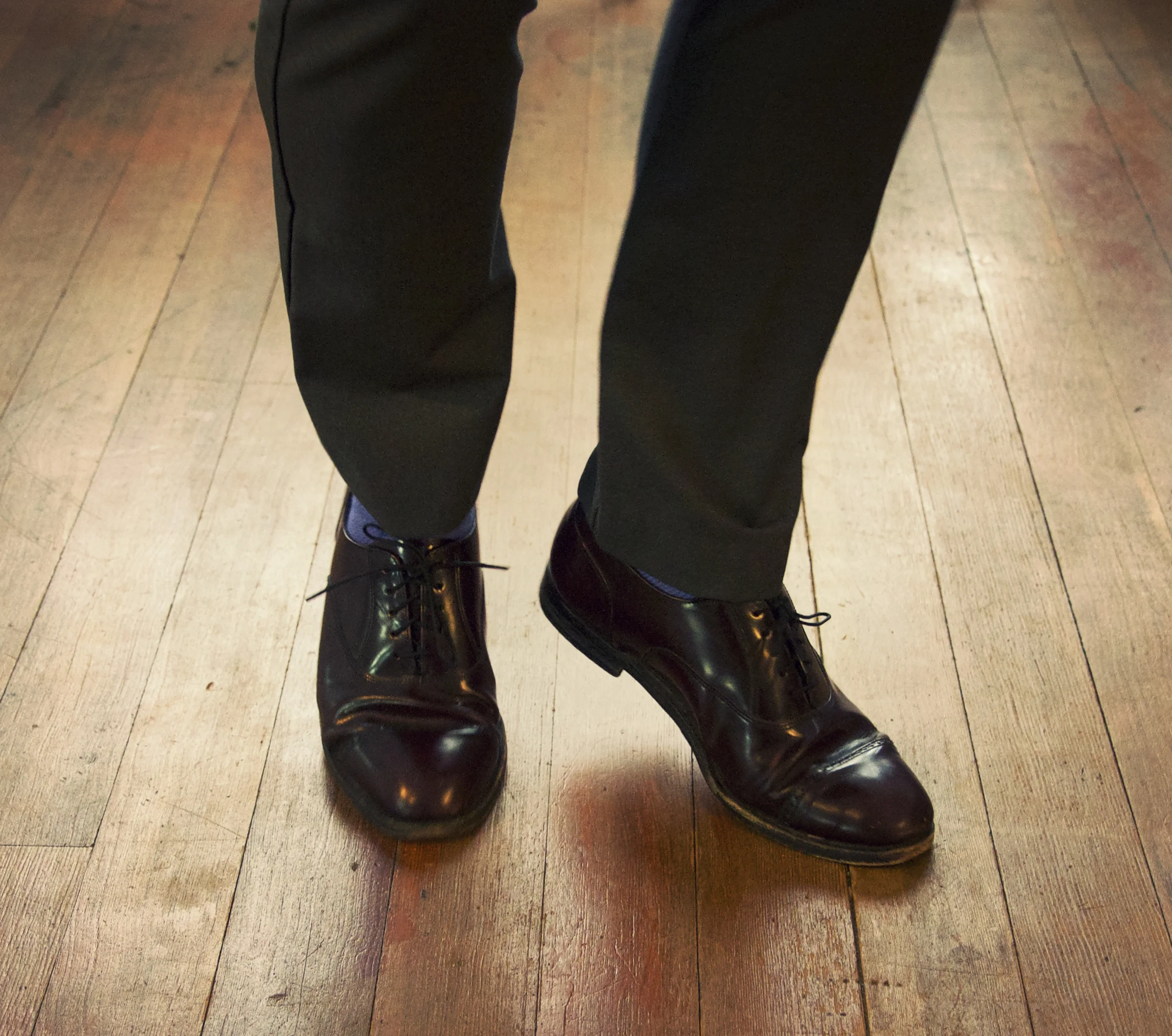Damhsa ar an sean-nós
Damhsa ar an sean-nós...
Brian Ó hAirt learned old-style Irish step dancing in his teens and not long after was exposed to the sean-nós dancing tradition of Conamara in western Co. Galway by dancers Róisín Ní Mhainín and Seosamh Ó Neachtain. This exposure inspired him to continue his burgeoning dedication to the Irish language (Gaeilge), and the sean-nós dancing and singing styles from that region. While living there in 2003, he became the first and only American-born prize winner at Cruinniú na mBád's sean-nós dancing competition held outside of Winkle’s pub in Kinvara, Co. Galway. It was there he was introduced to Pádraic Ó hOibicín’s unique style of sean-nós dancing—one very much focused on both subtle humor and intricate phrasing. He has since worked with and been inspired by Pádraic's dancing, while further developing his own dance style which is informed not only by the steps of Róisín and Seosamh but also his peers and his own music making on button accordion and concertina.
Brian tours and dances professionally with his award-winning ensemble Bua and with singing legend Len Graham. He uses his nearly twenty years of experience in sean-nós dancing to lead workshops at many prestigious events across North America including the Old Songs Festival, M.A.D. Week, the Swannanoa Gathering, Philadelphia Céilí Group Festival, Goderich Celtic Roots Festival & College, Jackson Celtic Festival, Grand Canyon Celtic Arts Week, Winnipeg Irish Festival, Minnesota Irish Music Weekend, Saint Louis Tionól and more! He continues to collaborate with musicians, singers, and dancers to bring sean-nós dancing to new platforms while also researching and presenting on various topics relating to this tradition. He is a dedicated proponent of Ireland’s culture and considers the passing on of its traditions as an endeavor near and dear to his heart.
DANCEFORM DESCRIPTION: Sean-nós dancing is a percussive dance form from the southern Conamara region of western County Galway. It is improvisational and focuses on both accompanying and guiding the musician by way of repetitive timing steps punctuated by tricks, which emulate the melodic structure of the tune. A dancer wears hard leather-soled shoes (or something with a good thwack!) and positions his or herself near the musician so as to accommodate this musical conversation. The body is relaxed, the steps are often asymmetrical, yet the form is reminiscent of (but creates an experience quite different from) modern Irish step dancing.
Sean-nós dancing is a welcome alternative to step dancing for individuals interested in Irish dance but physically limited. It’s less impactful and athletic than step dancing but engages both the body and mind in a way that’s scientifically proven to benefit aging individuals or those with physical/cognitive challenges. It’s also a helpful addition to step-dancers as they must adjust their weight, foot position, and posture; think critically of music as symbiotic with and not just accompaniment to their dance; as well as think creatively on their toes to create new choreography on spot. Because sean-nós dancing comes from one of the Irish Gaelic speaking communities of Ireland, there is also a cultural component to this dance form, which requires dancers to consider and learn about the families in those communities who uphold this tradition and the cultural events that showcase it.
WORKSHOP DESCRIPTION: I offer beginner workshops in reels and jigs (1.5 hours each or a combined 2 hour workshop) as well as a masterclass (2 hours) for those with more skill who would like to learn advance steps or have interest in learning about the performative aspects of sean-nós dancing. These classes focus on building an awareness of timing, weight distribution, foot placement, and connection to the music--aside from the general teaching of steps associated with this dance form. Several minutes are spent warming up and stretching before and after the bulk of teaching. I also allow time for 'stepping out'--i.e. dancing freely to the music to practice newly acquired material in a playful, relaxed atmosphere. It’s my desire to make this dance form financial accessible so my rates vary to accommodate all that goes into engaging a community—from rental costs to average community income to publicity.
